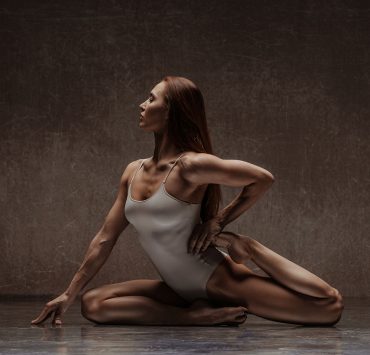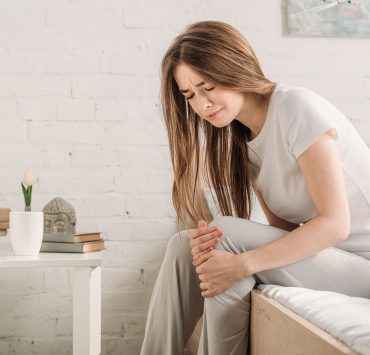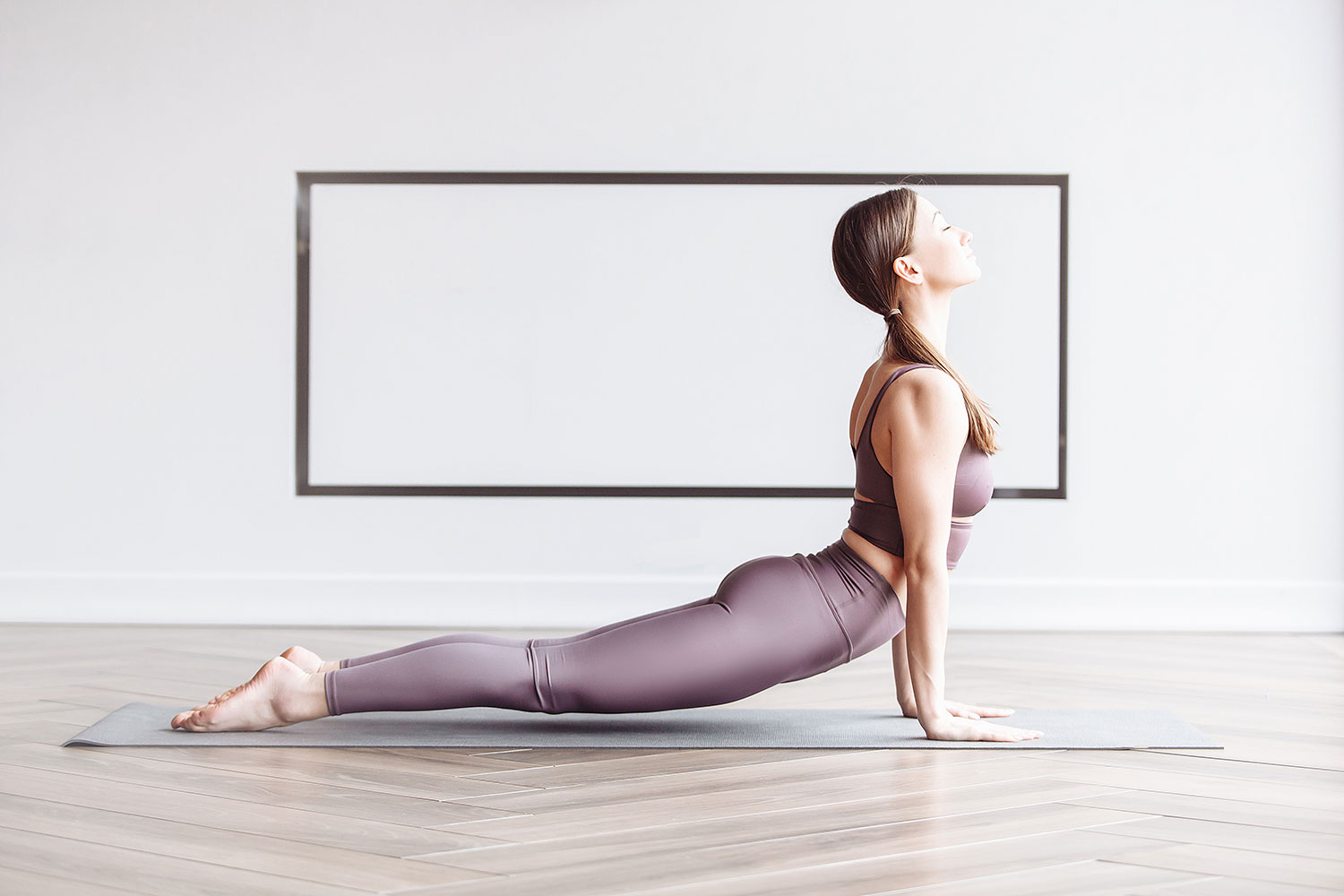
Meditation coach Emma Morrison is the go-to person for those…
Sun Salutations are a great way to warm up the body, constitute your breathwork, and get you into the yoga zone.
For both beginners and more experienced yogis, Sun Salutations provide a basic sequence to fall back on, rooting us in our practice.
But have you ever wondered what the purpose and historical value of performing a Sun Salutation are?
Historically, light has been a symbol of consciousness and self-illumination, thus informing our practice to honor the sun and its benefits.
Ancient yogis taught that each individual replicates the world at large, asserting that our devotion to the sun is a reflection of devotion to our own inner sun.
By placing our hands at our hearts at the beginning and end of each sequence, we honor the sun inside and outside of us, allowing us to be led by our hearts.
These teachings are meant to center your practice in a more spiritual way, allowing you to explore more lightness in your sequence on and off the mat.
If you’ve practiced Vinyasa, Power Yoga, or Ashtanga, you’re likely familiar with Sun Salutations A and B.
But have you ever heard of Sun Salutation C?
Surya Namaskar C offers slight variations to your Sun Salutation that will help you open up to new additions and get you out of that mental state of autopilot.
Before we begin, it’s important to remember the purpose of our Sun Salutation. So what are certain things you should be looking out for?
Sun Salutation C seeks to build heat in the body. As we warm up and cultivate our own inner sun, we are moving through sequences that release blood flow and wake up the various parts of our body.
Breathe through your nose for a meditative practice. Breathing through your nose allows you to develop more air flow throughout your body and focuses our attention to our breath as they are linked to our movements. It also helps to slow down our breath and heart rate, making for a more centered practice.
Move slowly and gently as needed. Since we are warming up our bodies, it is important to listen to sticky areas that might need a little extra care in our practice. Be sure to attend to those needs as they inform your inner light and devotion to cultivating it.
Now that you’ve taken a moment to ground yourself in the purpose of Sun Salutation C, follow these steps to add some variation to your breath meditation and yoga practice.
#1 Begin in Tadasana — Mountain Pose
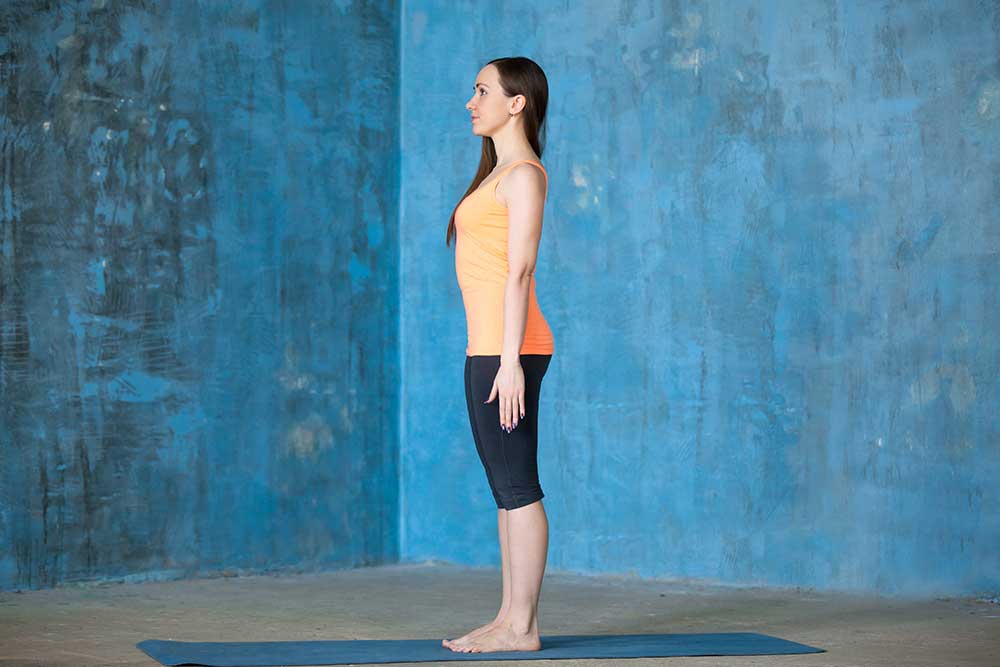
- Stand with your toes together at the top of your mat with a small space between your heels
- Distribute your weight evenly across both feet
- Stack your shoulders and hips over your feet so everything is aligned
- Lengthen your spine from your tailbone to the crown of your head and broaden your chest, stretching across your collar bones
- Release your arms to your sides with fingers spread wide and palms facing forward
- You may also place your hands at heart’s center, lifting your chest to meet your palms
#2 Inhale: Urdhva Hastasana — Upward Salute Pose
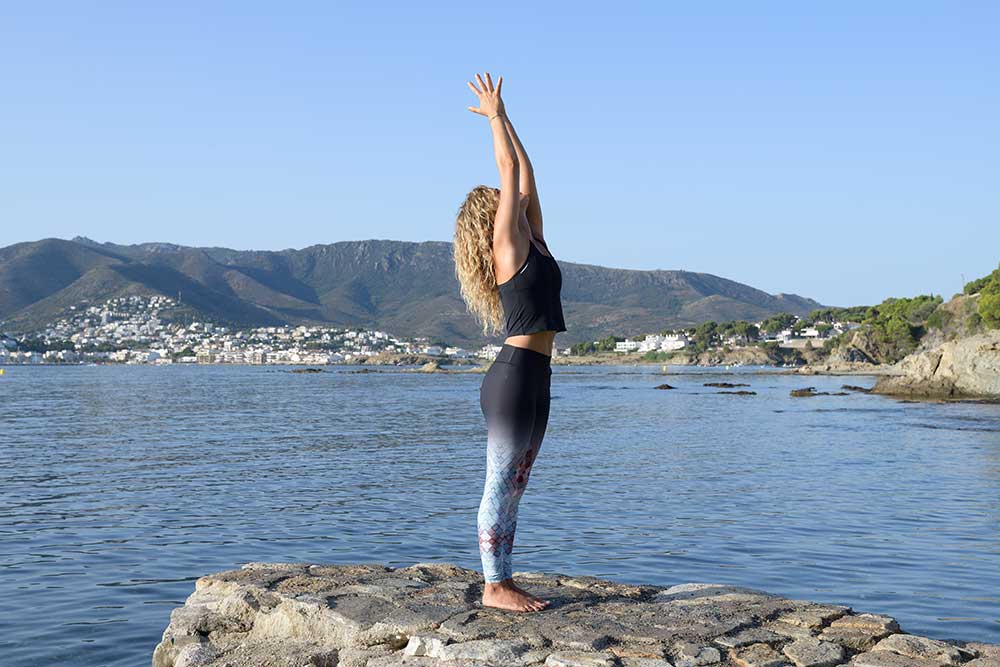
- Keep the same alignment and weight distribution as you had in Mountain Pose
- Inhale and sweep your arms up overhead to the sky, stretching out your side body
- Bring your palms together overhead and gaze up towards your hands
- Draw your navel in towards your spine to keep engagement in your core and alignment throughout your spine
- You have the option to add a small standing backbend here
#3 Exhale: Uttanasana — Standing Forward Fold Pose
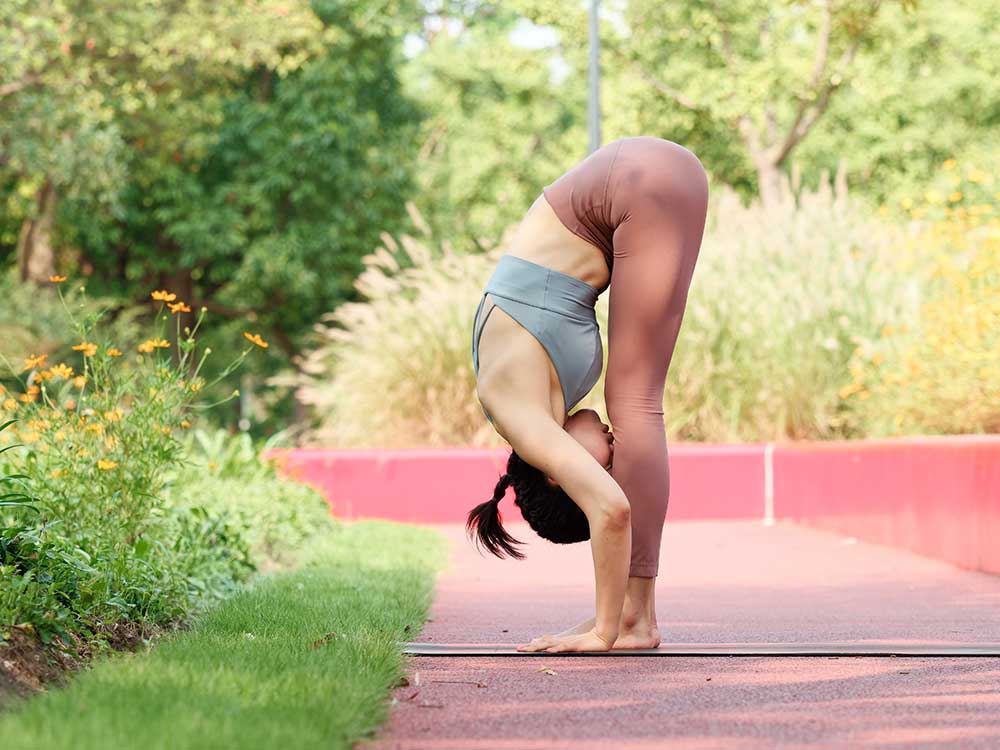
- Exhale and fold forward, hinging from your hips
- Bend your knees as much as you need to plant your palms on the mat
- Engage and lift your quadriceps to release any tension in your hamstrings
- Let your head hang heavy to release tension in your neck and keep your gaze towards your shins
#4 Inhale: Ardha Uttanasana — Half Standing Forward Fold, or Halfway Lift Pose
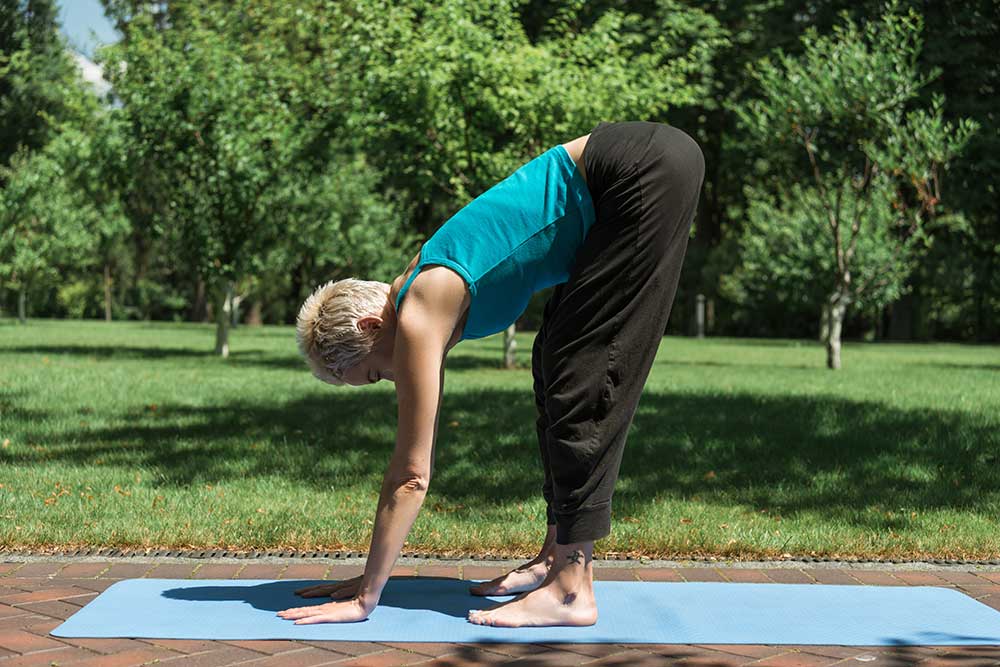
- Inhale as you lift your torso, lengthening your spine and flattening your back to be parallel to the ground
- Place your fingertips on the floor or gently rest your hands on your shins
- Your gaze should be towards the floor so your neck is parallel to the ground
- Bend your knees slightly as needed to make sure your back is flattened
#5 Exhale: Uttanasana — Forward Fold Pose
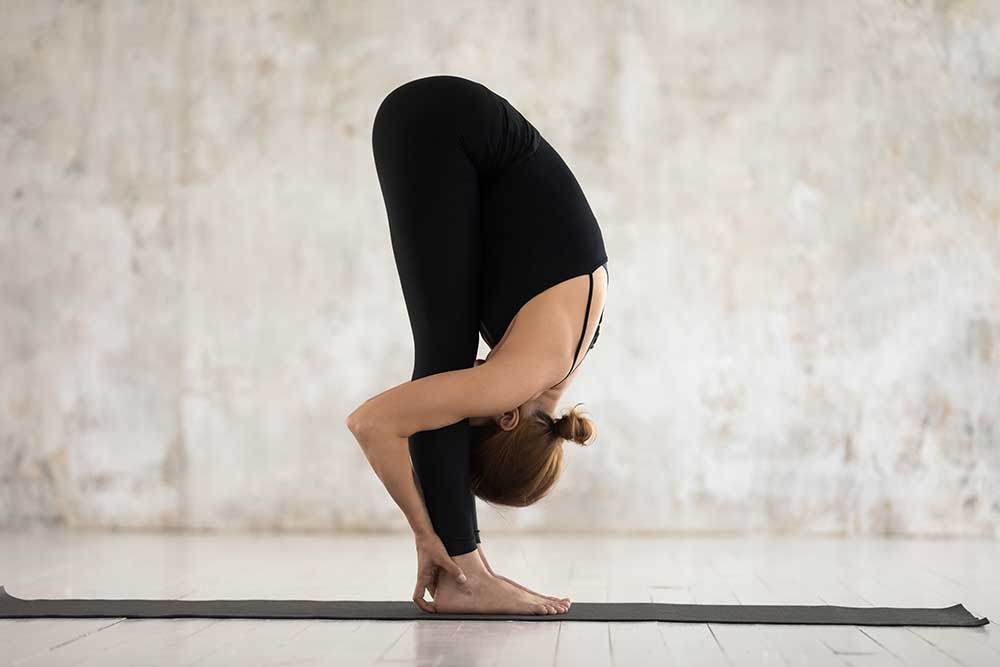
- Exhale and fold forward, hinging at your hips
- Bend your knees to plant your palms on the mat
- Engage and lift your quadriceps to release your hamstrings
- Let your head hang heavy to release any tension in your neck and gaze towards your shins
#6 Inhale: Step Back Into Anjaneyasana — Low Lunge Pose
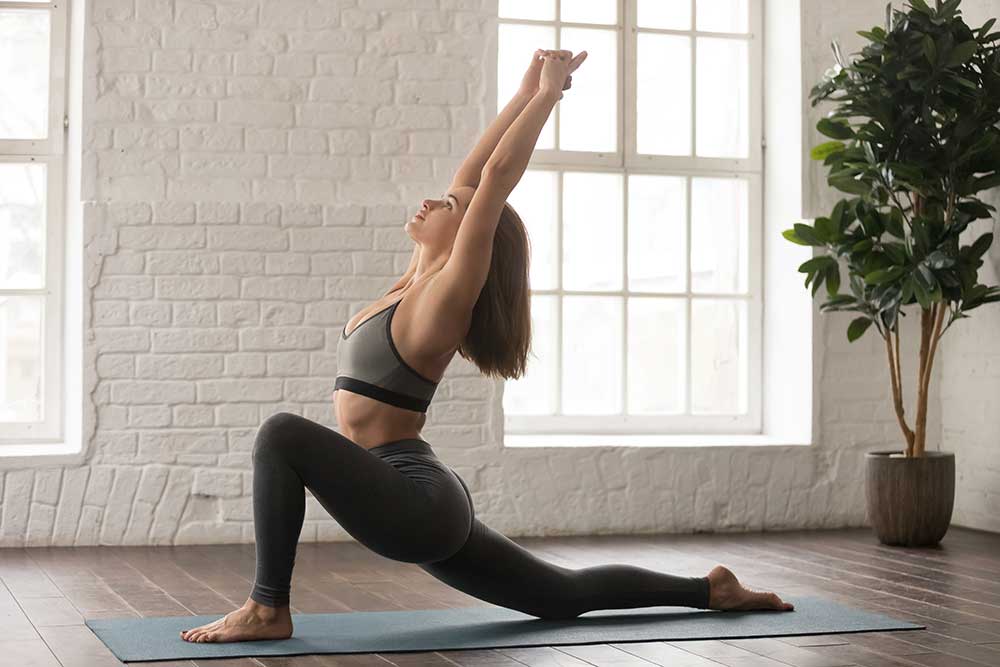
- Inhale and step your right leg back into a low lunge
- Lower your right knee down to the mat
- Let your hips sink forward and down
- Keep your left foot steady on the mat between your hands and make sure your left knee is stacked over your heel
- You can keep your palms on the mat or reach your arms overhead for a Crescent lunge variation
- Bring your gaze forward and relax your shoulders away from your ears
#7 Exhale: Adho Mukha Svanasana — Downward Facing Dog Pose
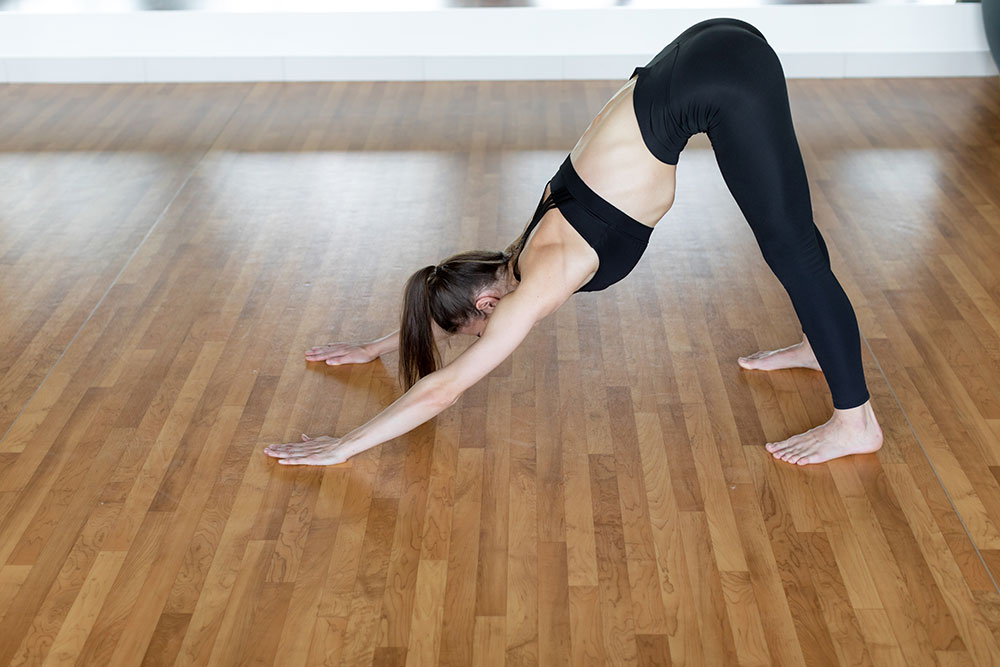
- Exhale and plant your palms on the mat
- Lift your back right knee and step your left leg back to meet your right with feet hip’s width apart
- Light your hips high and back, stretching your heels down towards the ground
- Your legs can be straight or have a slight bend in your knee
- You may also try pedaling out your legs to settle into your hamstrings
- Spread your fingers apart and grip the mat slightly with your fingertips
- Draw your navel in as you lengthen your spine and firm your shoulders blades into your back
- Make sure your weight is evenly distributed between your hands and feet
- Release any tension in your neck and gaze towards your shins
- You may explore moving your neck from side to side to work out any kinks
#8 Inhale: Kumbhakasana or Phalakasana — Plank Pose
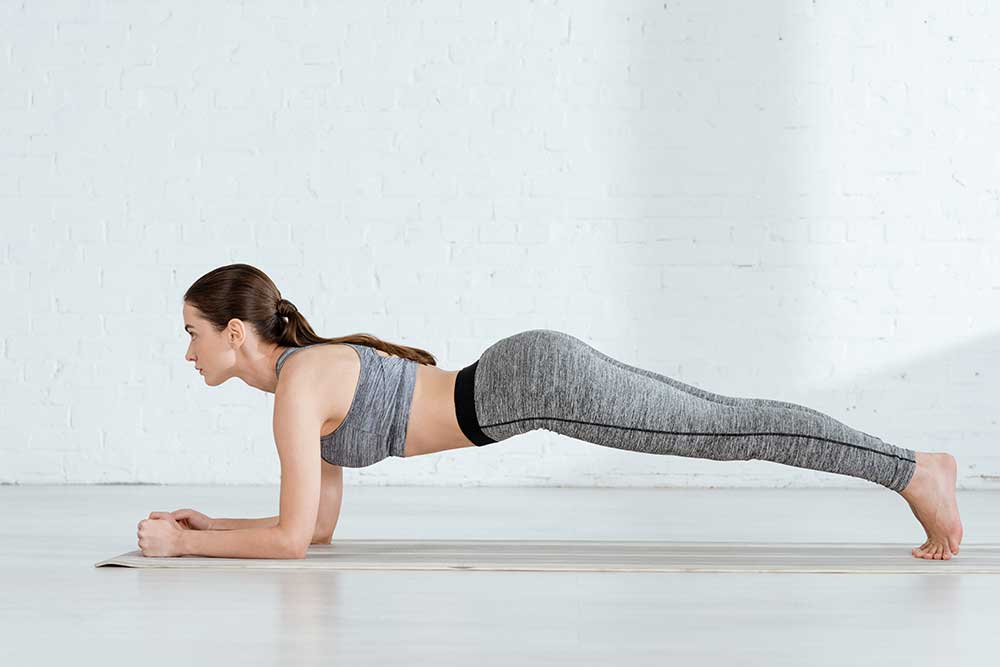
- Inhale and shift forward, stacking your shoulders above your wrists
- Spread your fingers wide and grip the map with your fingertips
- Lengthen from your heels through your spine and all the way to the crown of your head, gazing straight down at the mat
- Make sure your knees are lifting up to the sky and you are pushing yourself away from the mat
- Pull your navel in towards your spine to engage your core and entire body
- You can modify by dropping one or both knees down to the mat
#9 Exhale: Ashtanga Namaskara — Knees-Chest-Chin Pose
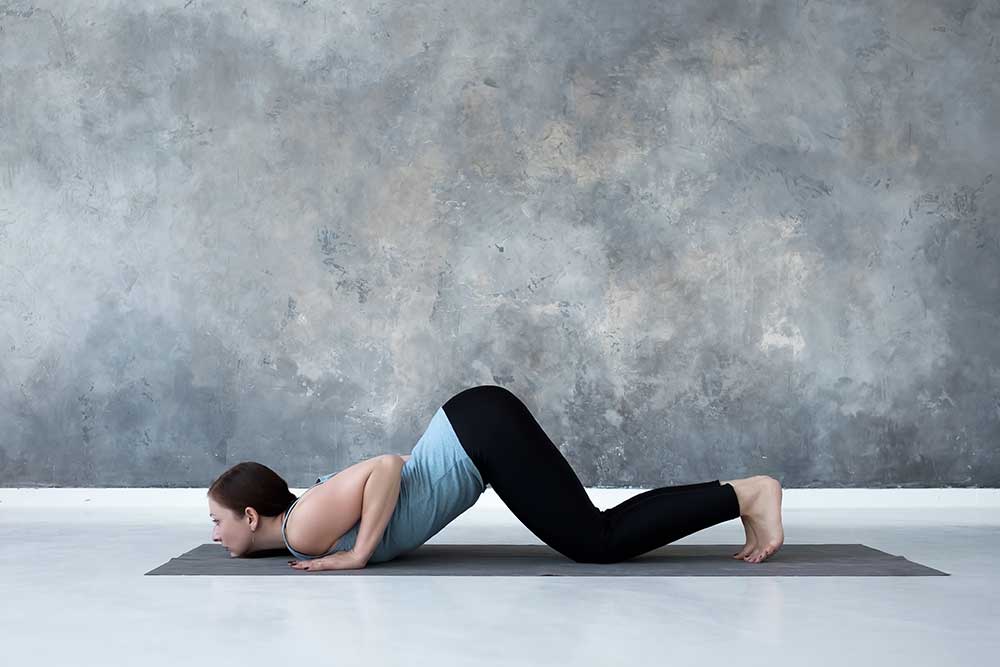
- Exhale and lower your knees to the mat, keeping your toes tucked underneath you
- Lower your chest to the mat between your hands with your shoulders hovering just above your hands
- Gently lower your chin down to the mat
- Hug your elbows in close to your sides
- Keep your hips and bum lifted high off of the mat
- Move slowly and fluidly through this pose as you take a long exhale
#10 Inhale: Bhujangasana — Cobra Pose
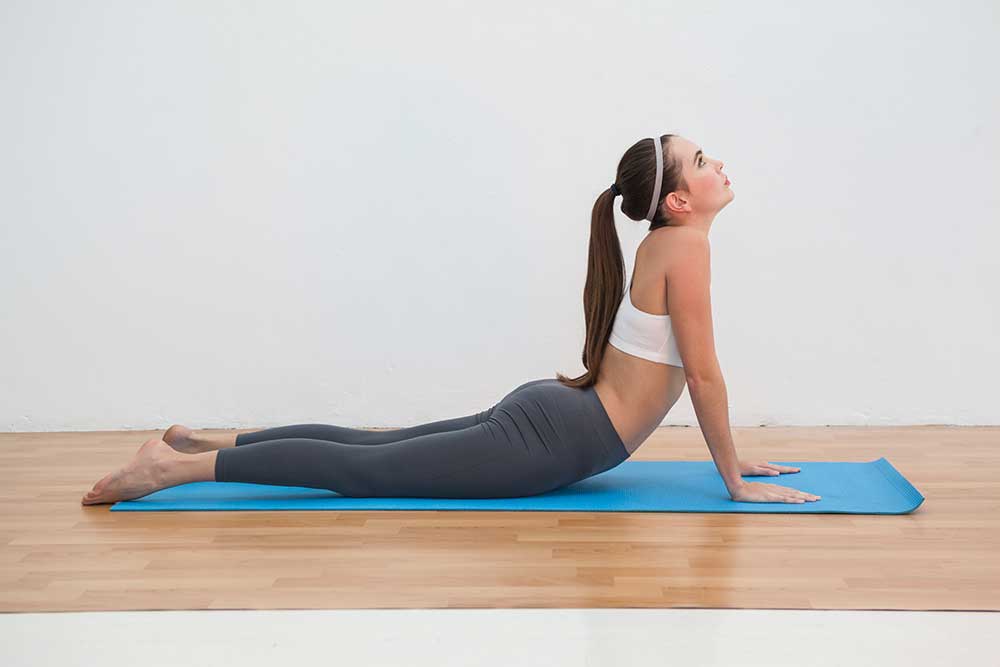
- Inhale and pull your chest forward as you lift your chest and shoulders off the mat and lowers your thighs down to the ground
- Keep your elbows tucked in close to your sides
- Release the tops of your feet down so they are resting on the mat
- Press your feet, thighs, and pubic bone into the ground while lifting up through your torso
- Broaden across your sternum and pull your chest forward and up
- Bring your gaze forward and out
#11 Exhale: Adho Mukha Svanasana — Downward Facing Dog Pose
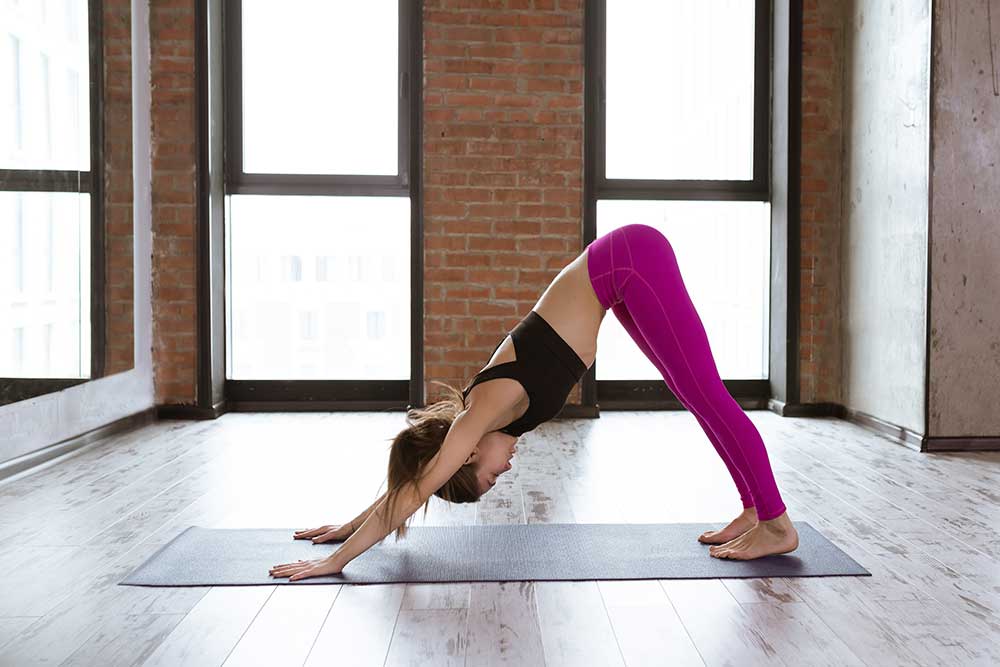
- Send your hips up and back
- Roll through or step onto the bottom of your feet
- You may pedal out your legs here or settle into your downward dog
- Take 5 breaths here
#12 Inhale: Step Forward into Anjaneyasana — Low Lunge Pose
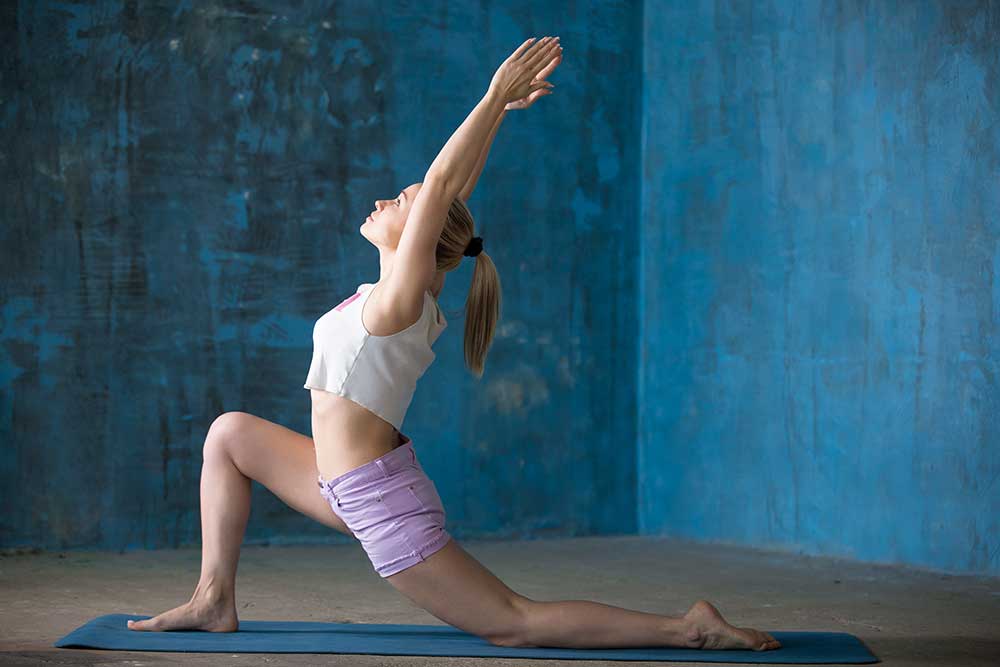
- Inhale and take a large step forward with your right leg for a low lunge
- Place your right foot in between your hands
- Lower your left knee down to the mat
#13 Exhale: Uttanasana — Standing Forward Fold Pose
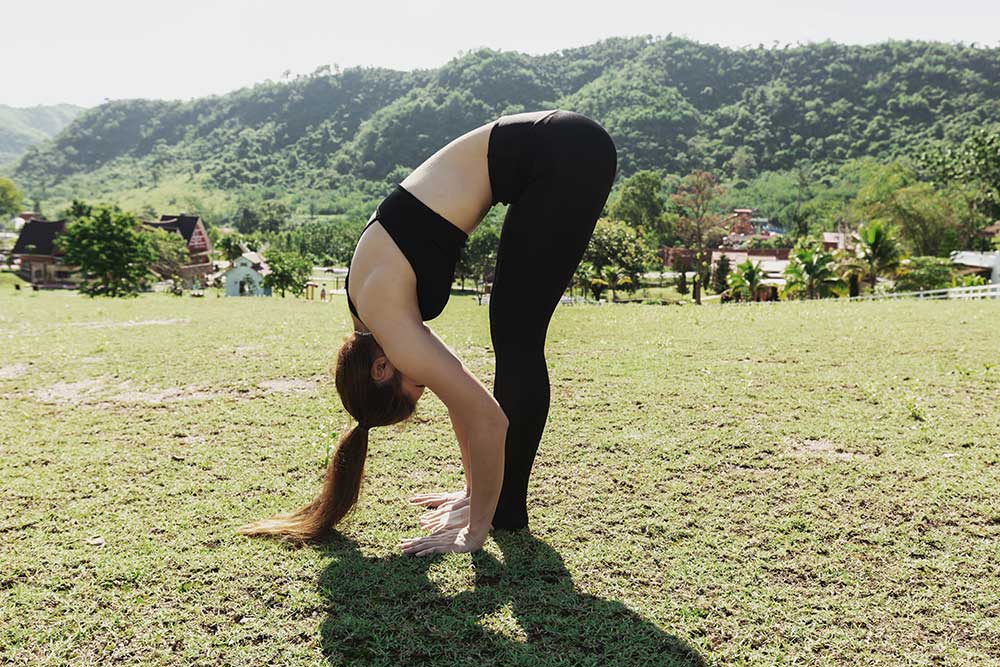
- Exhale as you lift your left leg and step it up to meet your right in a forward fold
#14 Inhale: Ardha Uttanasana — Halfway Lift Pose
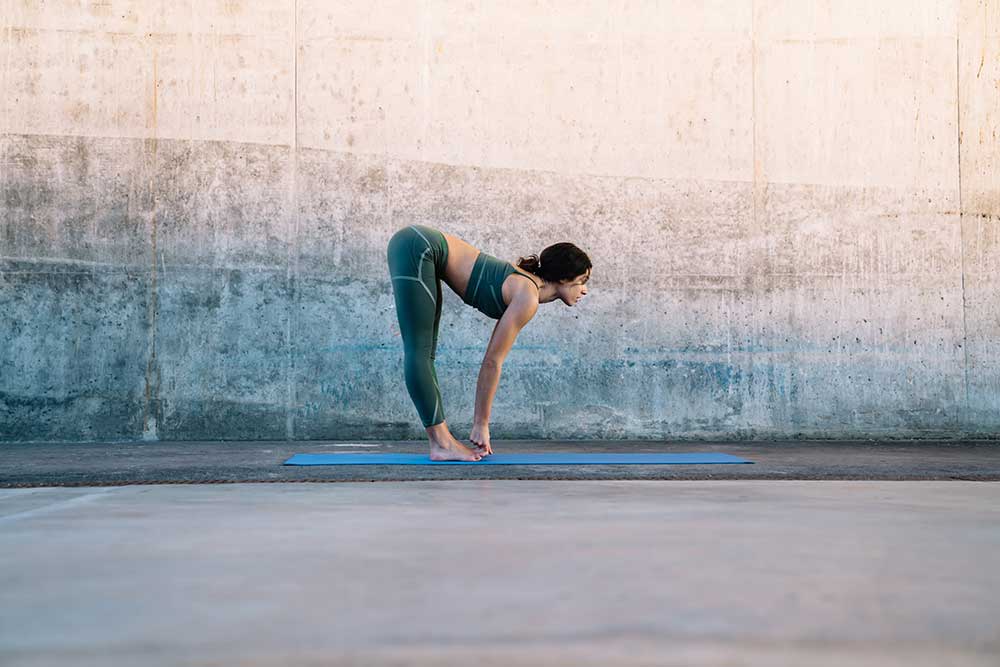
- Inhale as you lift your torso, lengthening your spine and flattening your back to be parallel to the ground
- Place your fingertips on the floor or gently rest your hands on your shins
- Your gaze should be towards the floor
- Bend your knees slightly as needed to make sure your back is flattened
#15 Exhale: Ardha Uttanasana — Standing Forward Fold Pose
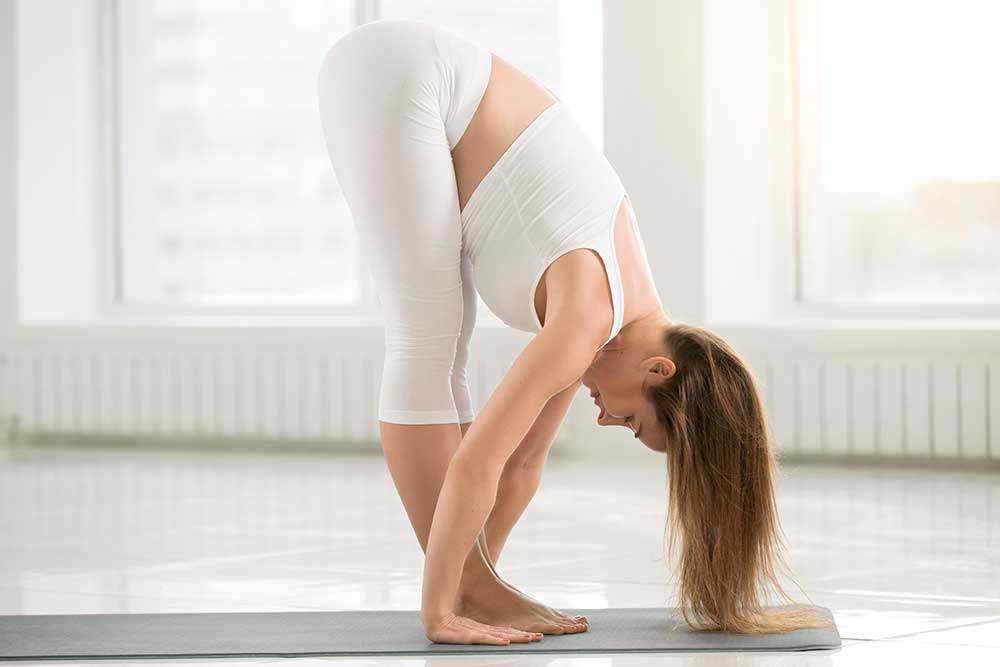
- Exhale and fold forward, hinging at your hips
- Bend your knees to plant your palms on mat
- Engage and lift your quadriceps to release your hamstrings
- Let your head hang heavy to release any tension in your neck and gaze towards your shins
#16 Inhale: Urdhva Hastasana — Upward Salute Pose
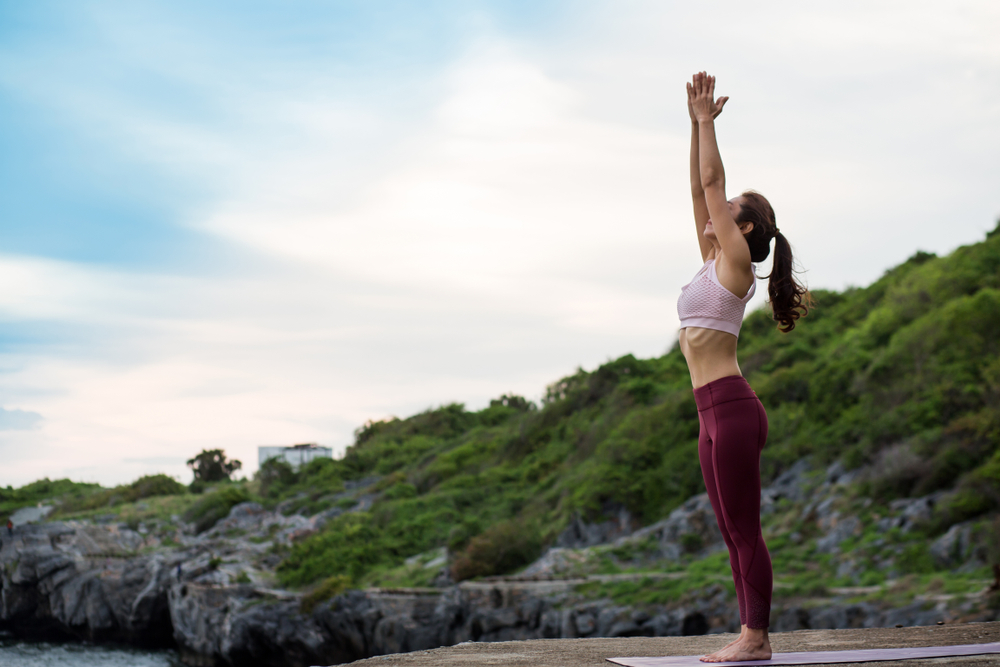
- Inhale and sweep your arms up overhead to the sky
- Bring your palms together overhead and gaze up towards your hands
- Draw your navel in towards your spine to keep engagement in your core and alignment in your spine
#17 Exhale: Tadasana — Mountain Pose
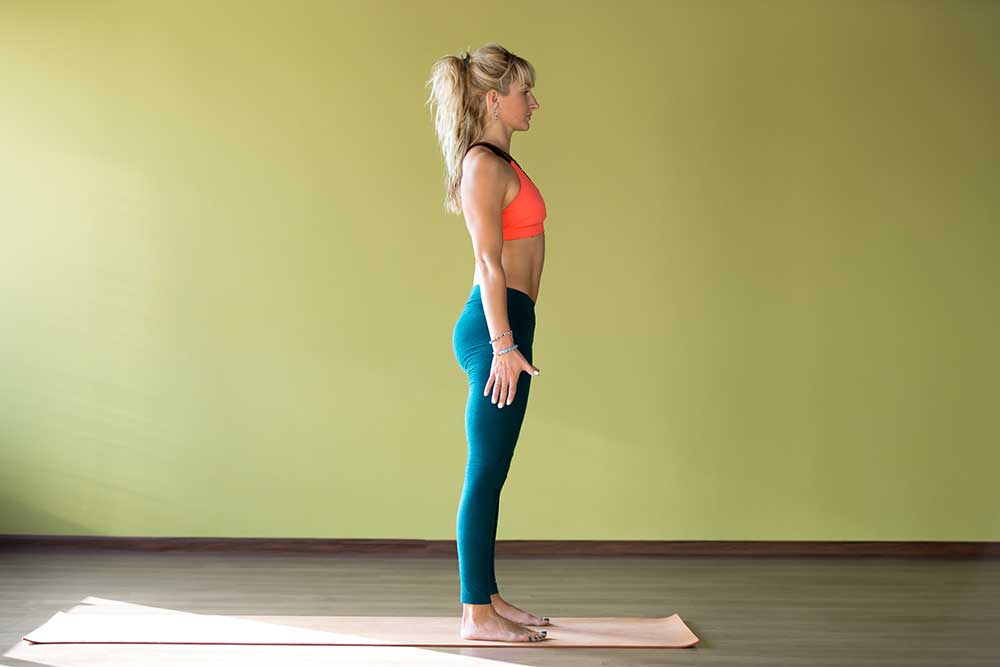
- Stand with your toes together and a small space between your heels
- Distribute your weight evenly across both feet
- Stack your shoulders and hips over your feet so everything is aligned
- Lengthen your spine from the tailbone to the crown of your head and broaden your chest across your collar bones
- Release your arms to your sides with fingers spread wide and palms facing forward
- Or if you did before, place your hands at heart’s center, lifting your chest to meet your palms
With these steps, you have now completed one half of your Sun Salutation C!
To complete your Sun Salutation, repeat these steps but replace your left leg stepping forward and back in Steps 6 and 12 respectively.
Always be sure to complete your Sun Salutation on both sides so that each side is even and balanced.
Final Tips for Surya Namaskar C
While Sun Salutation is used mostly as a preliminary warm-up for an asana session, Sun Salutation C can serve as a complete practice when repeated several times.
If you decide to use Sun Salutation C as your complete practice, you can try adding in slight variations to the steps including lifting your arms up, adding a bend or twist, or lifting into Crescent Lunge when appropriate.
If you’re having difficulty keeping up with the Sun Salutation, practice slowly with three to five repetitions and gradually build from there. The important thing is to honor your body’s needs, so if you need to go slow, go slow.
Sun Salutations also make for a wonderful flow practice. Flow practice allows us to be in constant motion throughout the sequence so that we are not necessarily hitting poses but flowing between them.
Flow practices are especially beneficial for creating a deeper connection with your breath as they dictate your transitions between poses.
You can also try closing your eyes to develop a greater connection to your breath and body, allowing for a more spiritual and grounded sequence. This also challenges your sense of balance and strengthens your core.
Make sure that your breathing is slow and intentional. With each movement, transition, and pose, focusing on your breath will help create a moving meditation and produce more heat within your body, increasing blood flow and stimulation.
As with any practice intended to warm up the body, remember to listen to your body’s needs and adjust when necessary to try to work out any sticky areas and release tension.
Traditionally, Sun Salutation is best performed outdoors facing east to greet the rising sun. This connection to the sun will allow you to cultivate your own inner light, following in the teachings of ancient yogis before you.
Just as we honor the light that is granted to us on this earth, we honor the light that we cultivate from within.
Namaste.
What's Your Reaction?
Meditation coach Emma Morrison is the go-to person for those living in Salt Lake City, Utah, who need to release stress and tension or simply dive deeper into their meditation practice. In her writing, you’ll receive useful information on how to live a more fulfilling life.






